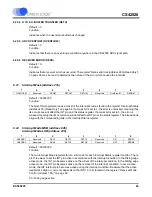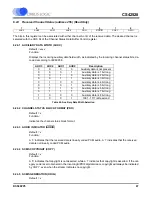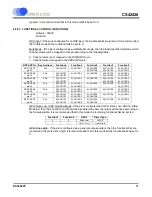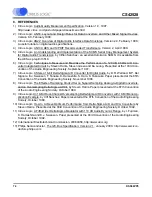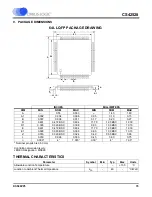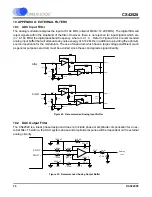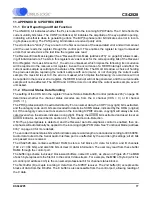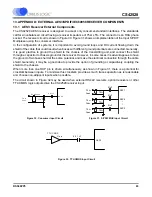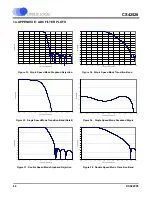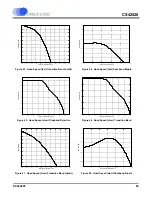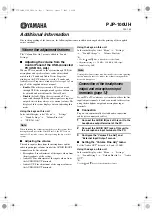
CS42528
78
DS586PP5
11.2.1
Channel Status Data E Buffer Access
The user can monitor the incoming Channel Status data by reading the E buffer, which is mapped into the
register space of the CS42528, through the control port Data Buffer. The Data Buffer must first be config-
ured to point to the address space of the C data. This is accomplished by setting the BSEL bit to ‘0’ in the
register “Channel Status Data Buffer Control (address 24h)” on page 66.
The user can configure the Interrupt Mask Register to cause an interrupt whenever any data bit changes
are detected when D to E Channel Status buffer transfers occur. If no data bits have changed within the
current transfer of data from D to E, then no interrupt will be generated. This allows determination of the
acceptable time periods to interact with the E buffer. See “Interrupt Mask (address 21h)” on page 65 for
more details.
The E buffer is organized as 24 x 16-bit words. For each word the MS Byte is the A channel data, and the
LS Byte is the B channel data (see Figure 26). There are two methods of accessing this memory, known
as one byte mode and two byte mode. The desired mode is selected by setting the CAM bit in the Channel
Status Data Buffer Control Register.
11.2.1a
One Byte mode
In many applications, the channel status blocks for the A and B channels will be identical. In this situation,
the user may read a byte from one of the channel's blocks since the corresponding byte for the other chan-
nel will likely be the same. One byte mode takes advantage of the often identical nature of A and B chan-
nel status data. When reading data in one byte mode, a single byte is returned, which can be from channel
A or B data, depending on a register control bit.
One byte mode saves the user substantial control port access time, as it effectively accesses 2 bytes
worth of information in 1 byte's worth of access time. If the control port's autoincrement addressing is used
in combination with this mode, multi-byte accesses such as full-block reads can be done especially effi-
ciently.
11.2.1b
Two Byte mode
There are those applications in which the A and B channel status blocks will not be the same, and the
user is interested in accessing both blocks. In these situations, two byte mode should be used to access
the E buffer.
In this mode, a read will cause the CS42528 to output two bytes from its control port. The first byte out will
represent the A channel status data, and the second byte will represent the B channel status data.
Control Port
From
S/PDIF
Receiver
E
24
words
8-bits
8-bits
A
B
D
Received
Data
Buffer
Figure 26. Channel Status Data Buffer Structure


